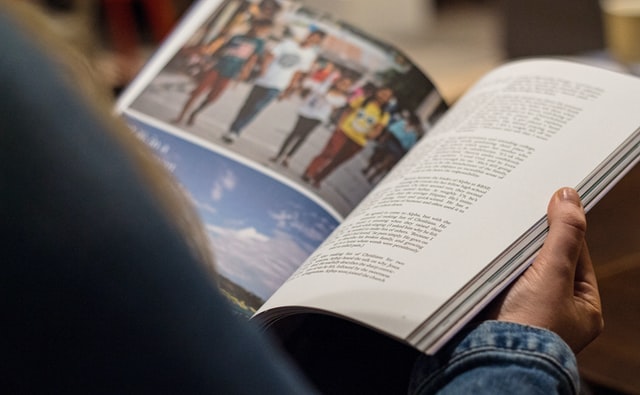By Liz Jones
An editor attempting to describe their job to a non-editor will often talk about ‘working with words’. This is essentially what we do: we take a client’s raw text, and we make it fit for purpose. But working with words is not all that an editor does. This post looks at some tasks editors might do as part of an editing job, as well as separate but related roles.
 Non-textual editorial tasks
Non-textual editorial tasks
There are many things an editor might do in the course of a typical editing job that have nothing at all to do with words.
Checking illustrations, photos and other figures
Many of the things we work on involve pictures and diagrams, whether we’re editing books, websites, marketing materials or annual reports. Sometimes we’ll be specifically briefed to check the figures in a document, especially if they do contain text, but often this expectation will be implicit, and it’s down to the common sense of the editor to make sure that if the text mentions five green apples, the accompanying image doesn’t show three red tomatoes. It’s common for photos to appear with a wrong caption, or for annotations to be misplaced.
It’s also sensible to check that photos haven’t been flipped – which might be fine, but not if they depict something that includes lettering, such as a shop sign, or people carrying out activities that have a specific orientation, like driving cars. Other things editors need to be alert to are items that look out of place or even inappropriate – like red telephone boxes in a publication with a global audience, or people drinking alcohol or smoking in a book for children.
Checking numbers and dates
Many editors say they love words but hate numbers – but still it’s necessary to engage with numbers in all forms, in most of the work that we do. Folios need checking for a start, and cross-references. The degree of elision in number and date ranges must be consistent, and this will often be specified in a house style. Many numbers that we encounter need sense-checking, too. For example, would it be feasible to describe a 1,500km car journey as having taken four hours? Could that historical person possibly have died before they were born? And in certain types of work, such as medical editing, numerically expressed quantities are literally a matter of life and death.
Checking typographical details
Meanwhile, being able to spot a rogue italic comma is not a matter of life and death, but it is arguably still important in its way. And the difference between a hyphen and an en dash may seem trivial to some, but a document that has all its typographical details correct will somehow seem more finished, more credible, than one that has been carelessly formatted – even if the reader can’t quite put their finger on why. Typographic details help to signpost the reader – often unconsciously – and when correct they all add up to a seamless reading experience, enabling the message to be imparted with minimum fuss and maximum accuracy.
Checking layout features
An important part of editing – and proofreading in particular – is ensuring that the layout of a piece of text, along with any accompanying images and graphics, makes sense. You’ll need to develop an eye for ‘page furniture’, whether you’re working in print or online: running heads, menus, pull quotes, breadcrumbs … Often different elements within a larger document will work together and interlink, and each will have a particular meaning, which may be more intuitive than explicit to the reader – but as the editor you will need to understand the rationale behind such design decisions, to be able to assess whether all layout features are present and correct.
Bear in mind, too, that it’s easy when editing to be great at spotting the tiny textual details, and then overlook a typo in a title ten times the size of the rest of the text. Or not to notice that a box or a panel is the wrong colour for its function, or that an entire section of a book is labelled wrongly. One of the hallmarks of an outstanding editor is the ability to step back and see the bigger picture as well as focusing on the tiny details.
 Related roles
Related roles
Some editors take on roles that are related to editorial work and may even be combined with it, but use a different set of skills.
Permissions
Many of the documents editors work on include images or text that come from somewhere else. Sometimes they can be used with a simple acknowledgement, without asking for permission from the rights holder. But depending on the context, and the amount of material being reproduced, often it will be necessary to seek permission. An editor might be asked to handle this aspect of a project alongside their editorial work, or it could be subcontracted as a discrete job. Either way, it’s a useful skill for an editor to be able to offer, and the CIEP now runs a course on copyright for editorial professionals.
Picture research
Sometimes, editors go beyond just looking at pictures, and help to choose them. Picture research can be a really interesting facet to our work. Just as when you’re checking images that have already been placed, you’ll need to keep an eye out for details that fit with the text that needs to be illustrated. Consider the audience, and ensure that any picture you use works as hard as possible to support or augment the text, to ensure maximum value of paid-for images. Some images are free, or may be used freely with a credit (see for example Unsplash or Pixabay). Others must be paid for, and the cost per picture will depend on the size of the image and the type and reach of the publication.
Project management
Many freelance editors are employed to manage editorial projects. This can involve setting and monitoring budgets and schedules, as well as commissioning contributors such as authors and illustrators, and freelancers like designers, editors and indexers. Attention to textual detail is still important, but at this level of work you’ll need to be able to cope with tight schedules and increased responsibility, as well as keeping a range of people updated on progress at all stages of the project. You’ll also need to assess the work of others and provide feedback where necessary. The CIEP offers a course in editorial project management, and it also publishes a guide to this subject if you want to find out more.
 Liz Jones has been an editor since 1998, and has worked on thousands of projects, involving millions of words and a whole host of other variables. She specialises in highly illustrated non-fiction for a range of clients, and also works as a commissioning editor on the CIEP information team.
Liz Jones has been an editor since 1998, and has worked on thousands of projects, involving millions of words and a whole host of other variables. She specialises in highly illustrated non-fiction for a range of clients, and also works as a commissioning editor on the CIEP information team.
Photo credits: open book – Blair Fraser; letters – Octavian Dan, both on Unsplash.
Proofread by Victoria Hunt, Intermediate Member.
Posted by Abi Saffrey, CIEP blog coordinator.
The views expressed here do not necessarily reflect those of the CIEP.
